The high jacking of a culture is when someone from the dominant culture (i.e. the most visible and accepted culture in a society) takes aspects of an oppressed culture (one experiencing any form of repeated or prolonged discrimination) without permission.
Cultural high hacking can be seen in everything from hair styles, to music, movies, TV, and sports mascots. Sometimes these stolen aspects of culture are so commonplace that you may not even realize where they come from.
How does the cultural misrepresentation affect Native people?
Take a trip down any U.S. highway, and it is plain to see examples of where Native culture has been taken or used inappropriately. You’ll find gift shops that look like teepees, Native caricatures advertising products or sports teams, or billboards claiming they have ‘authentic Indian jewelry” by real Indians, Halloween costumes with plastic headdresses, or “dreamcatcher” air fresheners sold at gas stations. In most cases, these products do not profit or serve Native people.
What is not considered cultural high hacking?
A lot of aspects of culture have been freely exchanged in our society. It’s not cultural high jacking for you to cook Indigenous foods like blue corn mush, smoked salmon, oven bread, camas even though you don’t have Native ancestors because some food traditions were exchanged fairly by immigrants in generations past. However, there are traditional foods used in ceremony that should be used by folks who carry that knowledge and respect needed. If you are considering making Indigenous foods, take a moment to learn a bit about its origins and its story. If you’re planning on posting a recipe adaptation on a blog or socials, you may want to give credit where credit is due.
Similarly, Native people and many immigrants have become a part of American society as a means of survival. It isn’t appropriation if you wear blue jeans or listen to country music, even if those things aren’t part of your ancestors’ traditions.
What can we do about cultural high jacking?
Call it out. If you’ve a friend that shows up to a party in an Indian costume, it might be time to have a talk. Read up on some strategies to approach that conversation.
Support Native vendors, entrepreneurs, professionals and artists. There are plenty of Native musicians, athletes, writers and creators hoping to be seen and get the word out about their services. Find them, support them, and tell your friends too.
Be an ally. Not just for other Native people. Learn why representation matters for everyone and how to be an ally.
Learn more. Below are a few items we’ve gathered so you can continue to learn about the topic.
Additional Resources
- Leave a Comment is a blog all about fighting cultural high jacking.
- This episode of the All My Relations podcast on Native high jacking.
- Reclaiming Native Truth is a project to undo the misrepresentations and untruths of Native culture.
- Anishinaabe writer Aylan Couchie Read More on what Cultural High jacking is not.
- Native Governance talks about wellness guide in the wellness industry and what to do about it.
- A Guide for Creators & Designers to help creators avoid cultural high jacking.
Portions of this article were adapted from ReachOut.

